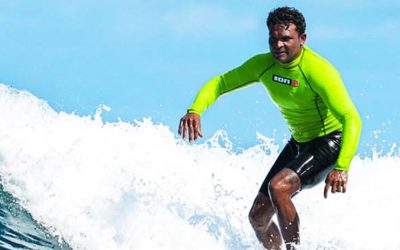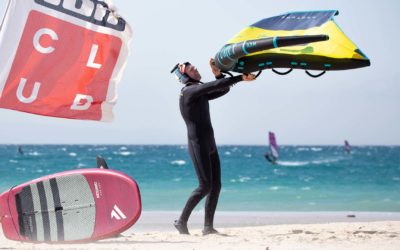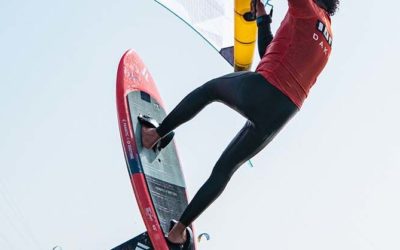In the Caribbean archipelago, it’s almost impossible to have never heard of the village of Cabarete, once a small fishing village, and now a legendary kitesurfing spot! Located in the northwest of the Dominican Republic, the kitesurfing community has blended into the scenery for a long time, given the exceptional wind conditions.
Cabarete: The Best Kitesurfing Spot in the Dominican Republic
Thanks to the trade winds present for most of the year, steady winds, a huge safe lagoon divided into a kite zone and a windsurfing/wingfoiling zone, waves between 1 and 2 meters on the reef (with depth), warm water close to 30 degrees, and a breathtaking landscape, there are many reasons why Cabarete is the best kitesurfing spot in the Dominican Republic! To ensure everyone ride on the water, Cabarete offers several spots such as Kite Beach, north of the village, with stronger winds and choppier waters, and Bozo Beach, more accessible and located in the heart of Cabarete, ideal for those new to kitesurfing or looking to progress… but beware of the shore break often present in winter. For downwind enthusiasts, let yourself be carried from the village of Cabarete to the wave spot of Encuentro, further north. It’s just fabulous!
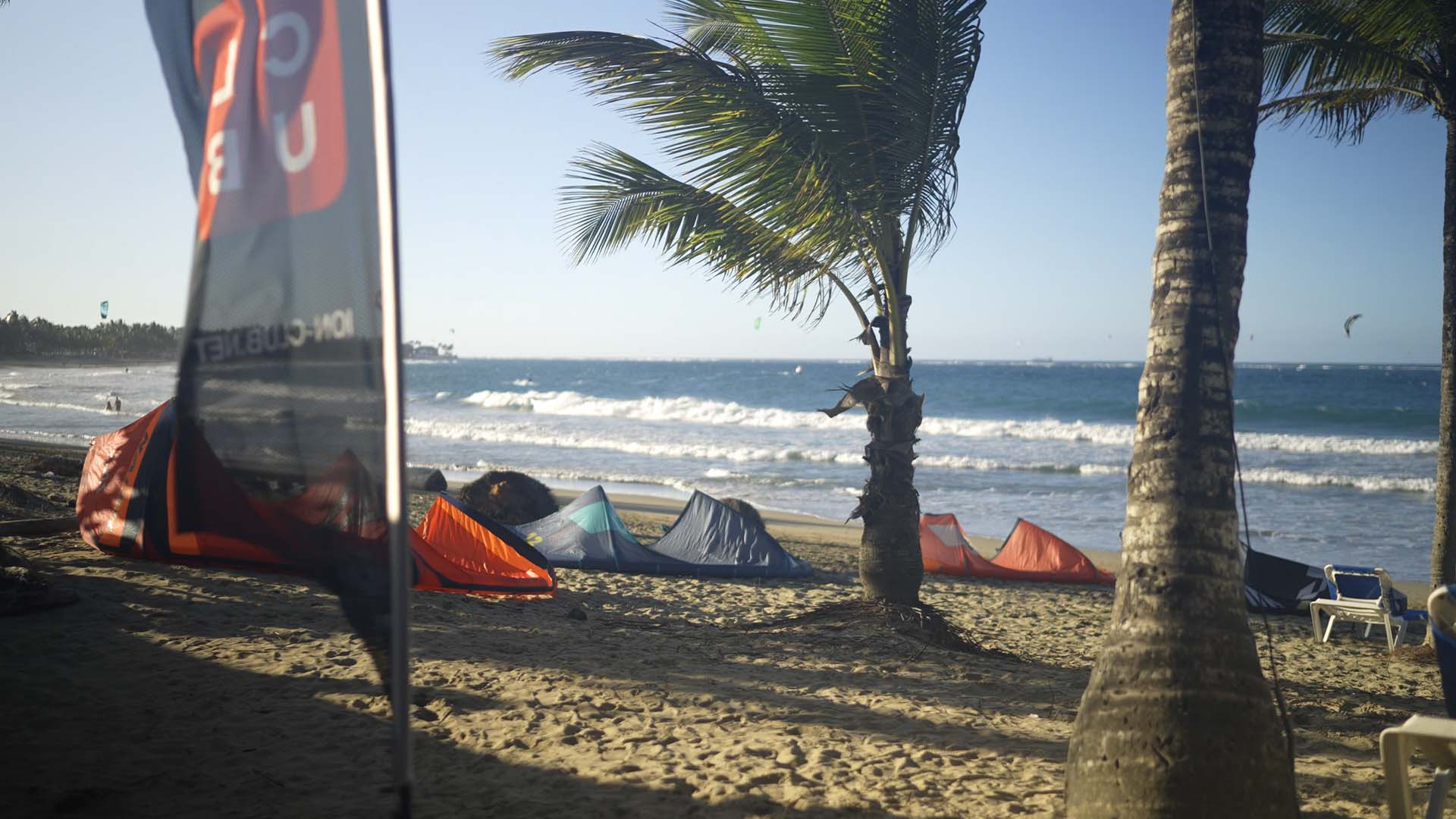
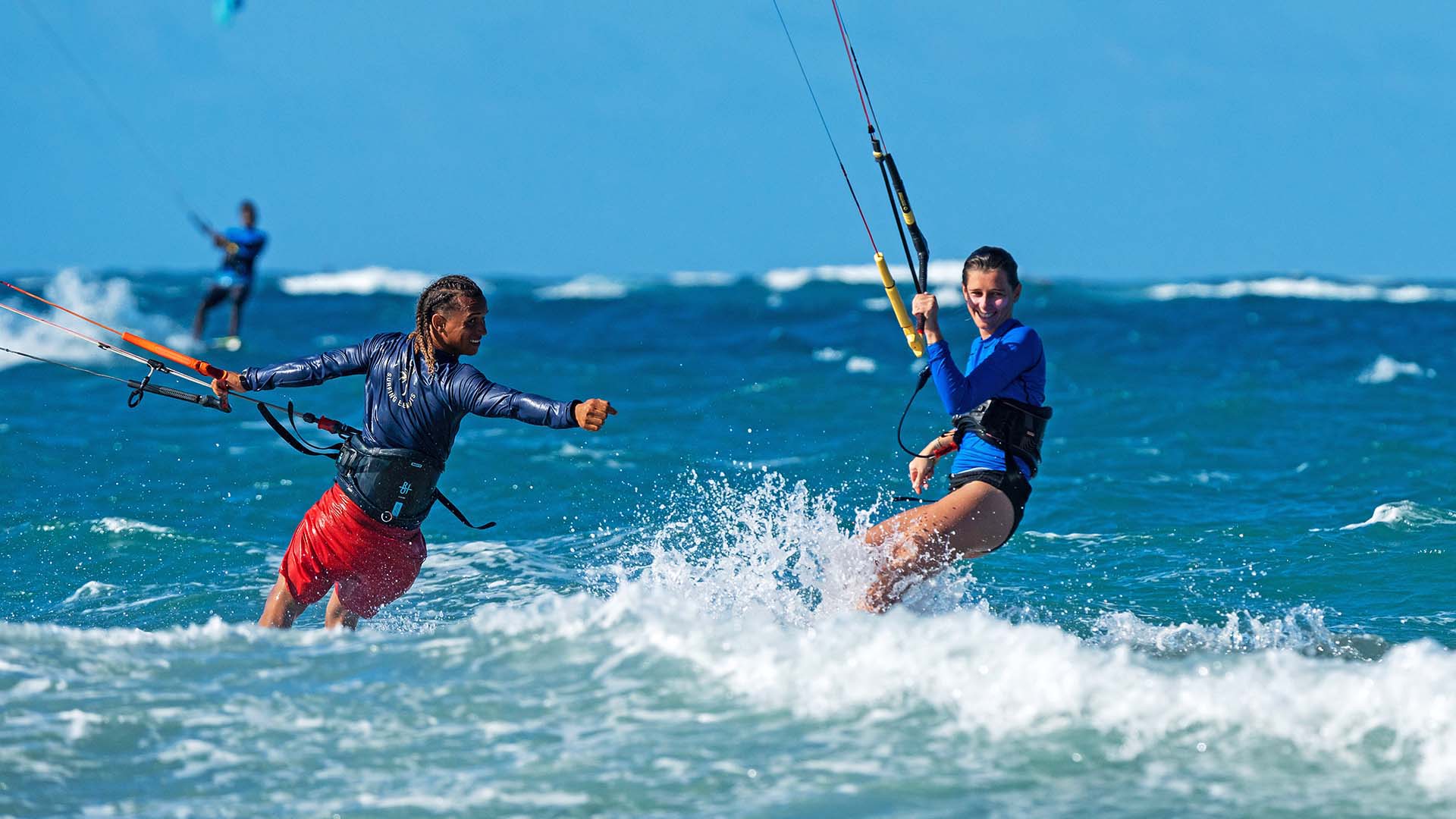
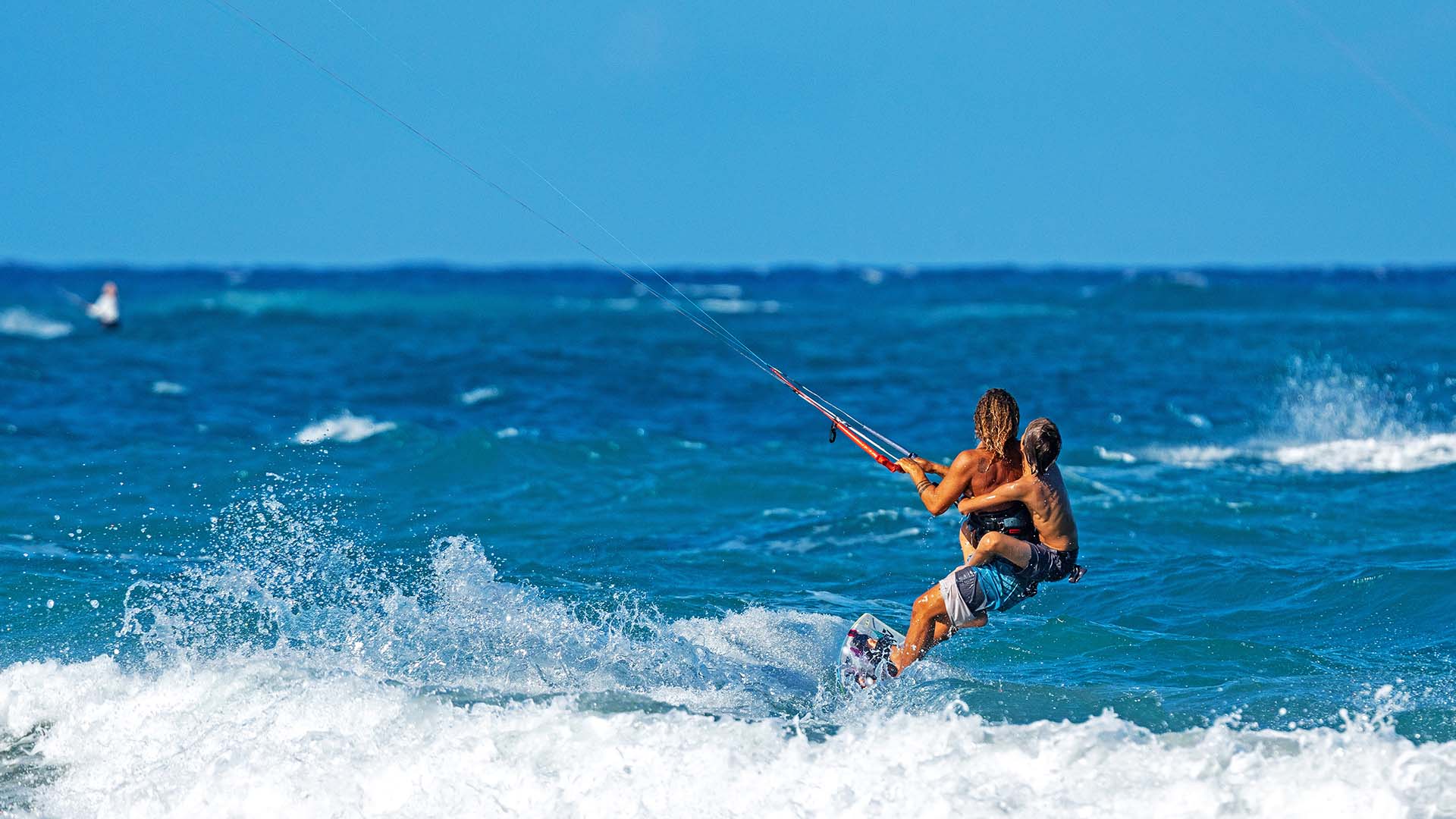
When to Go for a Kitesurfing Trip in the Dominican Republic?
In terms of kitesurfing, the weather is very good in the Dominican Republic, with an advantageous climate almost 365 days a year… wind, sun, and air temperatures constantly between 20 and 30 degrees… except from late August to November, which is the hurricane season with intense rain on some days, with sometimes gusty winds, making kitesurfing dangerous (except for experts). The best period (in Cabarete and its surroundings) is from May to July, with the trade winds blowing regularly between 15 and 25 knots, gradually picking up to reach their maximum from late morning to late afternoon.
What Level is Needed to Kitesurf in Cabarete?
From beginner to expert, freestyle, foil, wave riding, speed, freeride… kitesurfing in all its forms is available in Cabarete! However, beginners and riders who are not yet completely autonomous are advised to explore this little paradise of water sports between April and July to enjoy the best conditions suited to their level. During this period, the wind is more consistent, and the shore break is smaller than between December and April, which is more suited to wave enthusiasts. Cabarete’s lagoon is very spacious, and it’s rare to touch the bottom with your feet, which is good to avoid injury on the corals. If you fear drifting offshore, it’s impossible since the wind, rarely too strong, is oriented side-side onshore starboard. Anyway, never adventure yourself alone on the water if you are not yet autonomous in kitesurfing! Our team at ION CLUB Cabarete is here for you and offers kitesurfing lessons for all levels, private or semi-private, as well as supervised rentals equipped with Duotone gear. If the wind is not there some mornings, take a stand-up paddle and paddle along the beautiful beach of Cabarete, lined with giant palm trees and coconuts.
Which Kitesurfing Kite to Choose for a Trip to the Dominican Republic?
Which kite(s) will I use during my kitesurfing trip in the Dominican Republic is certainly the most important question to ask before departure! Of course, it is useful to analyze the forecasts and weather statistics of the kite spots you intend to ride. In the high season (June to August), choose a kite between about 7 and 11m² (depending on your weight as well). In April-May, the most used kites will normally be those with a surface area of around 8 to 13m². In winter (December to March), bring your larger kites (at least 10 or 11m² up to 15-16m²) to be sure to ride! Some spots are windier than others in the Dominican Republic, as is the case with the different kitesurfing spots in Cabarete. The dominant wind (east-oriented) will always be a bit stronger on the beaches north of Cabarete (Kite Beach, for example) than at Bozo Beach (the main beach of Cabarete). If you want your anemometer to go crazy and oscillate between 25 and 35 knots, it’s worth spending a few days at Playa Buen Hombre, on the north coast, far from the crowd… or for lighter winds, choose Punta Cana on the east coast of the Dominican Republic, to enjoy light winds up to 20 knots.
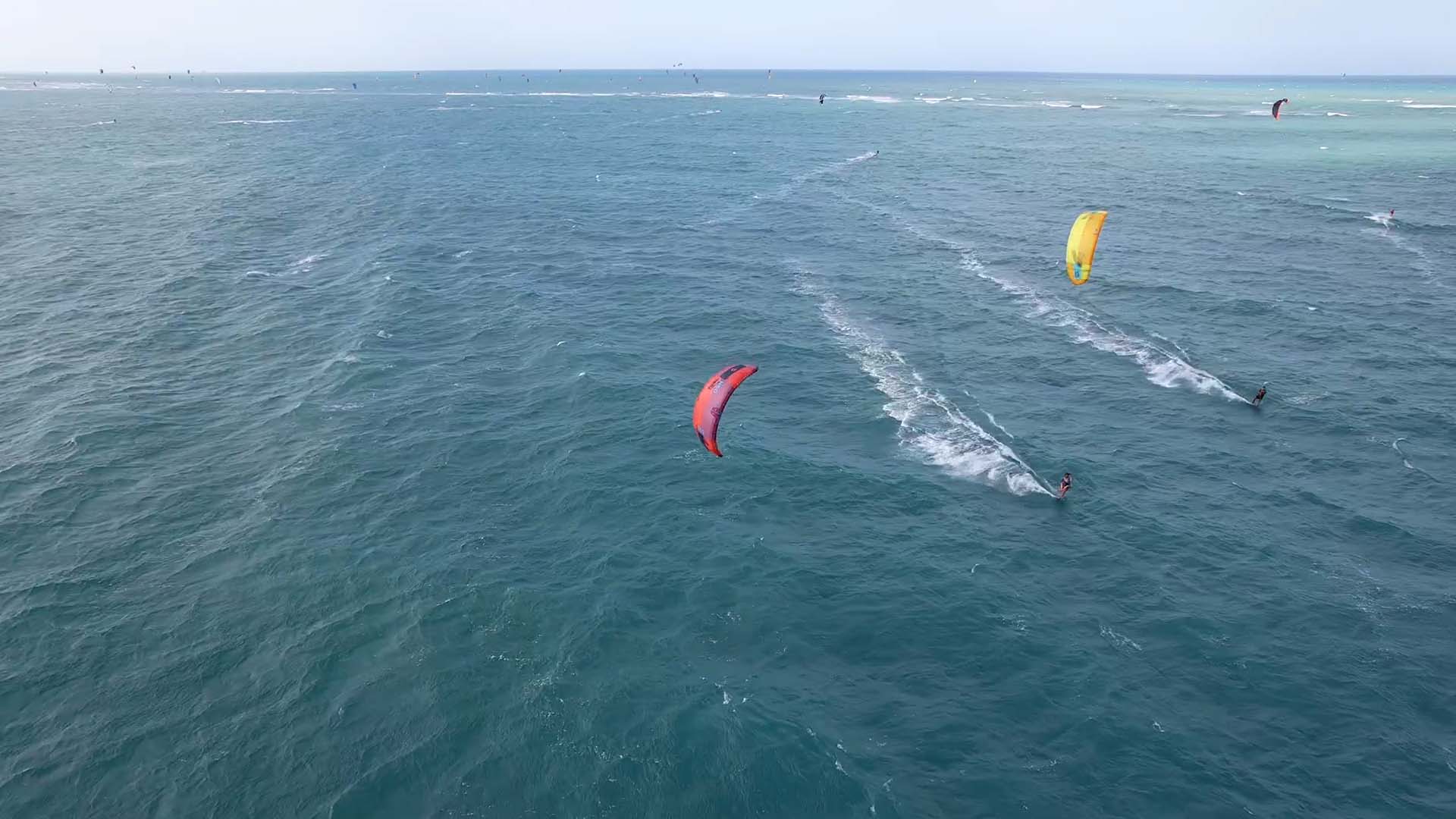
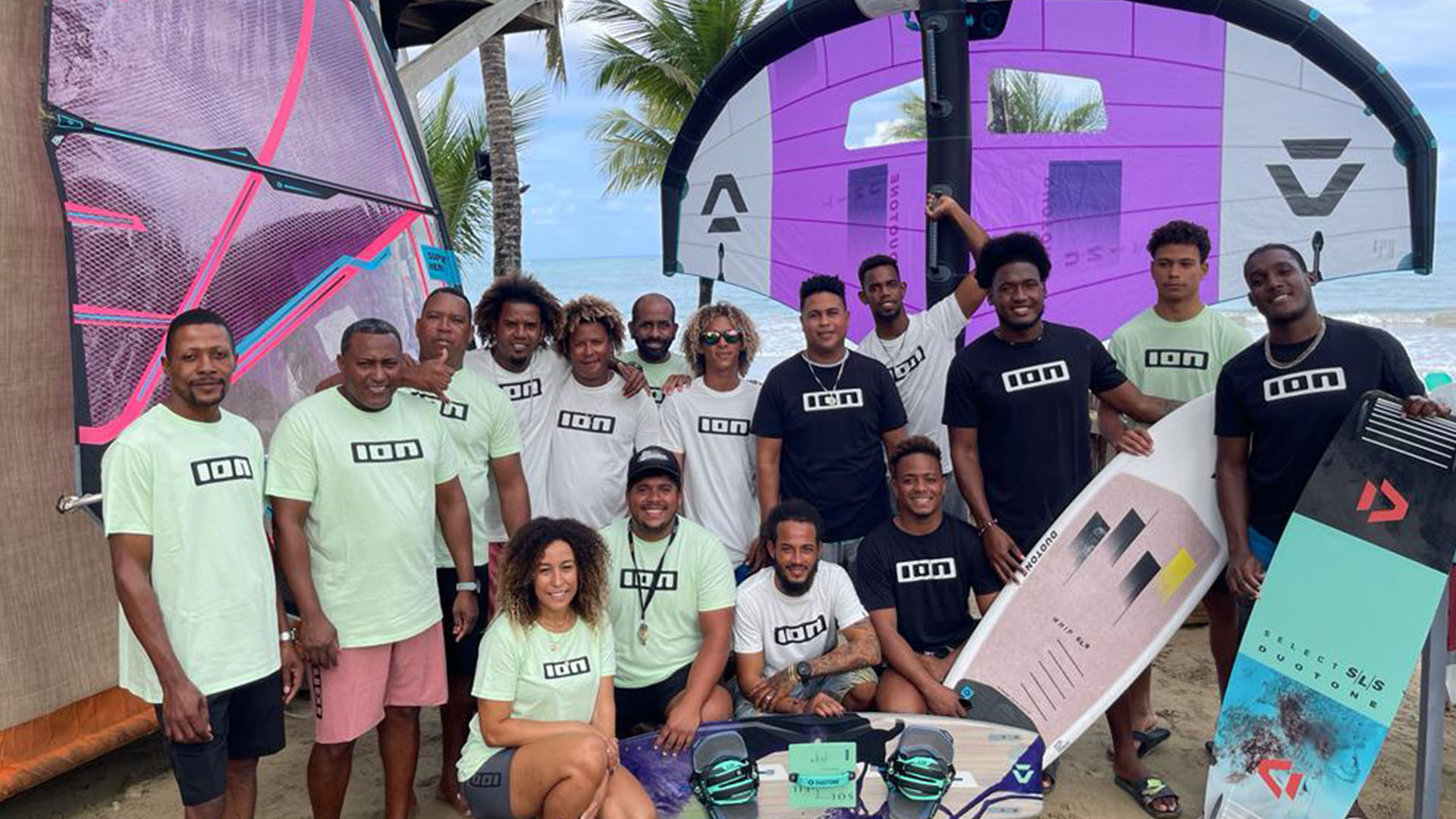
Kite in Cabarete: Travel Tips
Cabarete and its surroundings offer a multitude of kitesurfing, windsurfing, wingfoiling, surfing, and SUP spots on beaches as wonderful as each other, but don’t hesitate to explore the land by walking or doing an excursion. The Dominican Republic is not just about sand and palm trees; it also features a fascinating landscape of mountains, forests, caves, and waterfalls that can be explored on foot or horseback. To get to Cabarete, make sure to check your passport: exceptionally until May 30, 2024, it must be valid until the last day spent in the Dominican Republic. After this date, the passport must be valid for six months after your return date. As for local airports, you can choose to land in Santo Domingo, Samaná, and especially the closest, Puerto Plata, which is only 30 minutes from Cabarete. To stay by the water with a view of Cabarete’s main spot, don’t wait to book at Villa Taina, our accommodation partner, where our ION CLUB Cabarete center and its team are based… your dream will come true!
Where to surf? The top 10 destinations
Where to surf? The top 10 destinations Surfing has now become the number one water sport due to its accessibility in terms of equipment, and thanks to the large number of surf schools now open all over the world. Since the 2010´s it has been very accessible to learn...
Wingfoil Course – how to get started
Wingfoil course - how to get started A mix of foil, windsurf, kitesurf and sailing … and the wingfoil is born! Admittedly its invention is a little more complex than that, but this new board sport has been well and truly present on our spots since 2019. Many...
LAGON ENERGY WINGFOIL CLINIC
CLINIC WINGFOIL LAGON ENERGY & ION CLUBBook now | Limited places ! For the first stage of the GWA Wingfoil World Tour in Dakhla, Lagon Energy and ION CLUB Dakhla offer you a week of immersion between pro-coaching and VIP access to the competition! Jamal...

